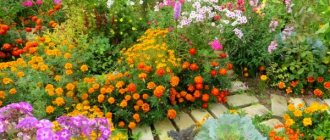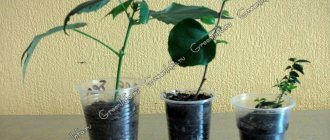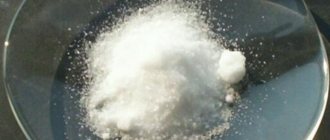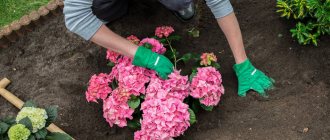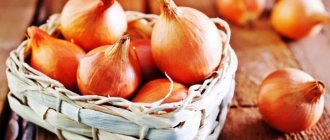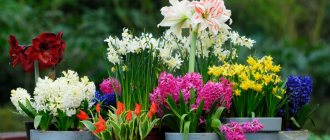Already at the end of February, even in areas with cold winters, the sun begins to warm up and daylight hours lengthen. At this time, you can begin to fertilize indoor plants that are beginning their growing season. A lack of nutrients can cause the flower to grow slowly, begin to stretch, wither, and may not bloom. Plants need nutrition, especially during growth and flowering. How to feed indoor flowers at home in spring and summer, what fertilizers and folk remedies are best to use for feeding, you can learn from our article.
Signs of lack of fertilizer
Even if your indoor flowers look good after wintering and grow well, they definitely need to be fertilized in the spring. To do this, you can use special ready-made fertilizers, which are sold in specialized stores, or prepare fertilizers yourself from natural products.
Attention! Indoor plants that were transplanted into new soil in the spring (or summer) do not need to be fed for two months, since fresh soil contains all the necessary nutritional components for growth and development.
Signs that your flower definitely needs feeding are:
- weak and elongated shoots;
- slow growth;
- small and pale leaves;
- unhealthy appearance of the bush;
- lack of flowering;
- dropping buds;
- due to poor resistance, pests appear on the plant and it is susceptible to diseases.
But, even if these signs are not present, at the end of February - beginning of March, home flowers should be washed under a warm shower and fertilizing should begin.
How to resume foliar feeding?
To ensure that the plant does not suffer from too sudden resumption of foliar feeding, it is worth postponing the first foliar feeding for 2-4 weeks after the start of the main feeding. It is extremely important to carry out the first procedure with a very weak, slightly concentrated composition, returning to the usual dosage gradually.
Before you start foliar feeding, you need to accustom the plant to regular spraying (if it was not part of the care in winter). When starting foliar feeding in spring, precautions such as protection from direct sunlight play a special role.
Before you start foliar feeding, you need to accustom the plant to regular spraying.
What elements do flowers need?
For development, growth, and flowering, domestic flowering and decorative foliage plants require the following elements:
- potassium increases resistance to cold, helps to absorb certain microelements, and is responsible for flowering;
- phosphorus - the element is responsible for the process of plant development and for flowering, which, if it is deficient, may not occur at all or will not be very abundant;
- nitrogen is necessary for the development of foliage, without it the leaves lose their color and fade (an excess of nitrogen leads to a lack of flowering);
- calcium is involved in nitrogen and carbon metabolism, and its deficiency prevents young leaves from developing and weakens root growth;
- sulfur is important for leaves, which without this element will begin to wither;
- Magnesium is responsible for photosynthesis, so if it is deficient, the leaves turn pale.
In addition, elements such as boron, copper, manganese, molybene, and iron are no less important for home flowers.
Rules and methods of foliar feeding
Under a microscope, a leaf is a layer of cells tightly adjacent to each other; this is the epidermis. Some cells form stomata, through which the exchange of elements with the environment occurs. Under conditions of moisture deficiency, the stomata close, stopping evaporation of moisture. Usually they are also closed at night, so foliar feeding is effective only during the day!
The top of the leaf is covered with a skin called cuticle. It performs a protective, barrier function, and also retains the moisture the leaf needs inside. The cuticle is transparent, as it must allow sunlight to pass through for photosynthesis. Succulents have thicker skins because they typically grow in drier conditions. But foliar feeding will be useful both for decorative leafy inhabitants of your apartment and for succulents!
It is believed that the plant absorbs nutrients much faster through the leaves than through the roots. In addition to leaves, non-woody young branches are capable of absorbing elements. The procedure helps in the development of healthy foliage, prolongs flowering, prevents many diseases, including chlorosis, and increases immunity - resistance to fungal diseases and insect attacks.
This method comes to the rescue in cases where the roots are weakened and are not able to absorb nutrition from the soil. In addition, if the plant has recently been transplanted, or is sick, fertilizers at the root can be harmful! Spraying also treats many diseases and gets rid of pests.
- Do not perform foliar and root feeding at the same time; you need to alternate these two types of procedures. The first is recommended to be carried out every 4 weeks, making sure that at least 10 days pass between feeding “from below” and “from above”! Plants with large leaves (monstera, eucharis, croton, etc.) can be fertilized in this way every three weeks.
- The best time for foliar feeding is in the morning. At the time of fertilization, the leaves should not be dusty, otherwise stains will remain and the nutrients will not be absorbed properly! It is recommended to do useful spraying on the day of watering (simple watering without fertilizer) so that the soil does not dry out.
- Just like with root procedures, you need to respect the seasonality! The first fertilizer can be sprayed with the beginning of flower growth in the spring, then (if the plant is flowering) at the moment the buds appear and at the end of flowering. Keep in mind that during the flowering period you cannot fertilize so that drops do not fall on the petals!
- The inner surface of the leaf has a thinner cuticle, which allows it to better absorb moisture. Therefore, it’s a good idea to spray the leaves on both sides! Be careful with succulents that have leaf rosettes (aloe, echeveria, haworthia, sansevieria, etc.): moisture getting inside the rosette can cause rotting!
- Do not fertilize sick plants! If a pest or fungal disease is detected, the flower must first be cured and fertilized at the rehabilitation stage.
✿
Types of fertilizers for plants
It is most convenient to buy special fertilizers, which are available in several types:
- Liquid organic and mineral fertilizers for home flowers are easy to dilute and can be used for both root and foliar feeding.
- Complex mineral fertilizers in powders are also easy to dilute and contain many different nutrients.
- Fertilizers for plants in the form of tablets, sticks and capsules have a prolonged action. This means that they are placed in the soil, where they dissolve slowly when watered and therefore act for a long time.
You will be interested to know: How to feed violets for abundant flowering: folk remedies and ready-made fertilizers
Organic fertilizers for plants
It is not very convenient to feed indoor flowers at home with nutrient-rich manure or humus, since they have a specific smell. The easiest way is to buy ready-made fertilizers in a specialized store, which can be universal or intended for a specific type of flower:
- The ideal is a universal fertilizer based on vermicompost, which also contains microelements. They can be used to feed both home and garden crops.
- Watering can is an organo-mineral liquid fertilizer for decorative flowering indoor, balcony and garden plants.
- Bio-Bloom is an organic fertilizer, the use of which improves growth and flowering.
There is no point in listing all fertilizers, since today there are a large number of them. Therefore, you can easily choose what you need for your green pets.
Mineral fertilizers for plants
During the growing season, that is, from spring to late autumn, it is recommended to feed home flowers with both organic and mineral fertilizers. To do this, it is advisable to alternate them.
In spring, it is recommended to apply nitrogen fertilizers, which will help the flower begin to develop and grow foliage.
Among the complex mineral fertilizers we can highlight:
- Fertika Lux is a powder that dissolves quickly and contains many useful elements.
- Agricola is a mineral supplement that can be sold both in liquid and powder form.
- Zdraven turbo is a fertilizer that quickly dissolves in water and contains 10 elements necessary for indoor and garden crops.
- AVA is a complex nutrition with all the micro- and macroelements that are necessary for the development and growth of plants.
- Growth Power – chlorine-free fertilizer for indoor flowers with microelements.
This is a small part of the list of mineral fertilizers that flower shops offer.
When choosing a mineral fertilizer, remember that in the spring it should contain more nitrogen, and in the summer - potassium and phosphorus.
When to feed plants
A signal of a lack of nutrients can be slow growth, weak flowering or its complete absence, pale leaves, the appearance of light spots, thinning and elongation of stems. With sufficient lighting and temperature, a lack of vitamins and microelements can lead to such a poor condition.
It is recommended to start applying fertilizers at the beginning of March, when daylight hours increase and plants begin to wake up from winter hibernation. Many house flowers enter the active growth phase in the spring, so additional nutrition is more important than ever for them. From March to October, it is recommended to feed indoor crops twice a month. Fertilizing does not stop even with the beginning of flowering.
Fertilizer for house plants can be used in both dry and liquid form
In cold weather, from mid-autumn to the end of February, most indoor flowers are in a state of hibernation, so they do not need additional feeding. But if the plants do not stop growing or bloom in winter, then they should also be fed with fertilizers, but 2 times less often.
Natural fertilizers
You can feed indoor flowers with folk remedies using natural products.
Feeding flowers with sugar
The glucose contained in sugar is an excellent building material and source of energy, therefore it is very useful for plants. However, without carbon dioxide it is not absorbed and can lead to the formation of mold in the soil and rotting of the roots. To prevent this from happening, it is recommended to use EM preparations containing microorganisms along with sugar. This could be Vostok EM-1 or Baikal-EM-1.
It is fashionable to use sugar to fertilize flowers in two ways:
- The plant is watered with a solution of 1 tablespoon of sugar and 1 liter of water. Additionally, the soil is fertilized with an EM preparation diluted according to the instructions.
- Sugar is poured on top of the soil at the rate of 1 teaspoon per 10 cm of pot diameter. On top of the sugar, the soil is watered with a solution of an EM preparation.
Instead of sugar, you can use ready-made glucose by dissolving 1 tablet in 1 liter of water.
Attention! The frequency of feeding with glucose and sugar should be no more than once a month!
Wood ash for plants
Wood ash is very beneficial for all plants. It can be used as a top dressing for home flowers and garden crops. This is explained by its rich mineral composition. Ash contains:
- calcium;
- zinc;
- magnesium;
- sulfur;
- iron;
- phosphorus.
In addition to its rich mineral composition, ash is also valuable because it disinfects the soil.
You will be interested to know: Feeding roses in the garden after winter in spring for flowering and growth: when and what to feed
There are two ways to use wood ash for fertilizing:
- Dry feeding . Before planting plants or flowers, ash is mixed with soil in a ratio of 1:50.
- Liquid feeding. Within a week, it is necessary to infuse the ash solution by dissolving 3 tablespoons of ash in 1 liter of water. It is recommended to use this fertilizer for watering flowers once every two weeks.
Which flowers should I feed with ash? All indoor plants love it, but cyclamen, fuchsia, geranium and begonia respond especially well to such feeding.
Fertilizing flowers with yeast
The use of yeast as fertilizer will help indoor plants develop fully and actively. The hormones and B vitamins they contain contribute to this. Yeast can be compared to full-fledged mineral fertilizers, since fertilizing with them has the following effects:
- increase the activity of microorganisms in the soil;
- produce phosphorus and nitrogen;
- accelerate the mineralization of organic substances;
- increase the release of carbon dioxide.
Mode of application:
- Live yeast. You need to dilute 200 grams of pressed yeast in a liter of water, put the solution in a warm place and let it brew for at least 2 hours. After this, the yeast solution can be used for fertilizer, after diluting it with water 1:10.
- Dry yeast. A packet (10 grams) of yeast and 3 tablespoons of sugar are diluted in 10 liters of warm water. The solution should sit in a warm place for one or two hours. If the resulting volume is large, then you can dissolve 1 gram of yeast in a liter of water. But in any case, before watering the flowers, the solution will need to be diluted in water in a ratio of 1:5.
Houseplants are fed with yeast solutions once a season, that is, in the spring before flowering, in the summer during flowering and in the fall after flowering. The fertilizer is valid for about two months.
Attention! Yeast is able to absorb potassium, so it is recommended to feed the flowers with ash along with them!
Only a fresh solution should be used, otherwise a pathogenic environment will begin to develop in the soil.
Succinic acid for indoor flowers
The acid obtained from processing natural amber has many useful properties.
However, for plants it is used not as a fertilizer, but as an auxiliary additive, the use of which strengthens the immune system and helps absorb nutrients. Mode of application:
- Dissolve one powder or tablet of the drug in one liter of warm water.
- Use the resulting solution to water the soil in the pot or spray the leaves of the plant. It will be suitable for use within three days.
- You can soak seeds and flower cuttings in the solution.
- The amber solution can be used no more than once a year. Succulents and cacti are fed with it once every two or even three years.
Chlorophytum, oleander, prickly pear, begonia, crassula, ficus, arrowroot, aglaonema, and citrus fruits respond well to fertilizing with succinic acid.
Iodine for plants
Many people will probably be surprised, but iodine can be used as a fertilizer for houseplants. It is not an important element in their life, but an iodine solution will help the flowers grow and bloom more intensively and protect them from fungal diseases.
Application:
- Dilute 1 drop of iodine in 1 liter of water;
- Attention! The concentration of the solution cannot be increased, otherwise the plant may be destroyed;
- the day before applying iodine fertilizer, it is recommended to water the flower with clean water;
- the resulting solution should be poured along the edge of the pot so as not to burn the roots.
It is recommended to use iodine supplement once every three months in spring and summer. Withering and weakened plants can be watered once every 10 days.
Spilled coffee
If you are a lover of natural coffee, then after drinking the aromatic drink, do not throw away the coffee grounds, as they can be used to fertilize your home flowers. Of course, dormant coffee does not saturate the soil with any nutrients, however, after adding it, the soil will become lighter and looser, due to which oxygen will penetrate into it more easily and acidity will increase.
But it is worth remembering that not all flowers like high acidity in the soil, so it is recommended to use coffee grounds as a top dressing for azaleas, rhododendrons, roses, lilies, gladioli and many decorative foliage plants.
Fertilizers for home flowers from vegetables and fruits
Even vegetables and fruits can be used as fertilizer for indoor plants:
- Onions are an excellent protector of home flowers from pests and diseases . And its husk contains many microelements. The plants are fed with infusion, which is prepared from a liter of boiling water and a handful of husks. The solution is boiled for about 10 minutes over low heat, after which it is infused for another 3 hours. Before use, filter the solution and spray (do not water!) the top layer of soil in the pot. It is recommended to use twice a month.
- An infusion of orange and tangerine peels will strengthen the immunity of plants and protect them from diseases and pests. An infusion is prepared from crushed crusts, which should be filled with a third of a liter container and filled with water so that the jar is completely filled. After a day, the infusion is filtered, after which water is added to the jar to a liter volume. In spring and summer, flowers are watered with citrus infusion 2 times a month, and in autumn and winter - once a month.
- Banana peels contain many nutrients, especially potassium . It can be used to make the same infusion as from citrus peels or used as a powder. To do this, banana peels need to be washed, dried well and chopped in a blender. The resulting powder is poured on top of the soil and watered with water. You can use this fertilizer once a month.
You will be interested to know: Use of succinic acid for orchids: preparation of solution, watering and processing
Preparations that stimulate the growth of home flowers
Also widely popular are drugs that are used when watering flowers for growth:
- Aspirin. A pharmaceutical preparation that is always at hand can also be useful in floriculture. A solution with aspirin helps to increase the brightness of the color of leaves in plants, improves immunity and promotes active growth. It is recommended to use no more than once every 2 months during the period of active plant growth (spring–summer). Take 1 tablet of aspirin (acetylsalicinic acid) per liter of water. Dissolve it thoroughly and pour it under the root undiluted.
- Castor oil. This is also a pharmaceutical drug that helps grow foliage faster and improves the plant’s immunity. There is no need to water the plants with this solution for a long time. Take 1 teaspoon of castor oil per liter of water, mix thoroughly and can immediately be used for watering. It is necessary to alternate with watering with plain water and water with this solution after 2 days.
- Hydrogen peroxide. Home universal assistant. This product activates plant growth, provokes flowering, and fights harmful bacteria and fungi. In the autumn and winter, this remedy is used to prevent various diseases. 2 tbsp. We dilute spoons of peroxide in a liter of settled water and mix thoroughly. We water every other day for 10–14 days.
Photo by O. Nikonorova: Peroxide helps plants quickly increase ground mass.
Rules for applying fertilizing
Before you start fertilizing your home flowers, study the rules for applying fertilizers so as not to harm your plants:
- Before applying fertilizer solutions, it is recommended to water the soil about a day with clean water. This procedure will protect the roots from burns.
- Transplanted plants should be fed no earlier than after two months.
- Flowers affected by disease or pests cannot be fertilized. They must first be cured and pests removed.
- All fertilizers must be used only according to the instructions. Their excess can lead to negative consequences.
- Not all plants are suitable for universal fertilizers, so for some flowers there are special fertilizers. Cacti and orchids should be fed especially carefully, since the usual concentration of fertilizing can destroy them.
Indoor plants need regular nutrition, especially during the growing season. Therefore, in the spring you should choose fertilizers suitable for your flowers and saturate the soil with nutrients. Green pets will thank you for timely feeding with beautiful new leaves, active growth and lush flowering.
How to apply long-lasting fertilizers in spring
With sticks, capsules and granules that make care so easy, it's even easier. Long-acting fertilizers, which the manufacturer recommends mixing with the substrate, are simply added in the specified proportion to the soil when replanting a plant or replacing the top layer.
The only thing worth taking care of is moderate moisture and extremely careful watering until growth resumes. If long-acting fertilizers are simply inserted into the container, then they are applied no earlier than 5-6 weeks after transplantation, avoiding contact with the roots.
Types of fertilizers and features of their choice
In order to choose the ideal fertilizers for your indoor plants, you first need to remember the need to take into account the individual characteristics of each plant and its preferences. When it comes to choosing from dozens of different preparations for indoor crops, it is unacceptable to look for a universal solution applicable to all plants en masse. Analyzing information about the nutrients required by a particular plant will help you choose the right form or type of specific fertilizer that can be used in your practice.
Advice from flower growers
Experienced gardeners always fertilize indoor plants correctly and know some secrets that are not obvious to beginners:
- Liquid fertilizer for decorative foliage can be applied both at the root when watering, and directly on the leaves, spraying them from a spray bottle;
- Do not feed sick or insect-infested plants. Exceptions include diseases associated with mineral deficiencies;
- In order to avoid root burn, the flower must be watered before applying the fertilizer solution;
- When preparing the mixture, do not exceed the concentration recommended by the manufacturer. Rather, on the contrary, the dose of fertilizer should be slightly reduced;
- Unused fertilizer can be frozen and thus significantly increase its shelf life.


